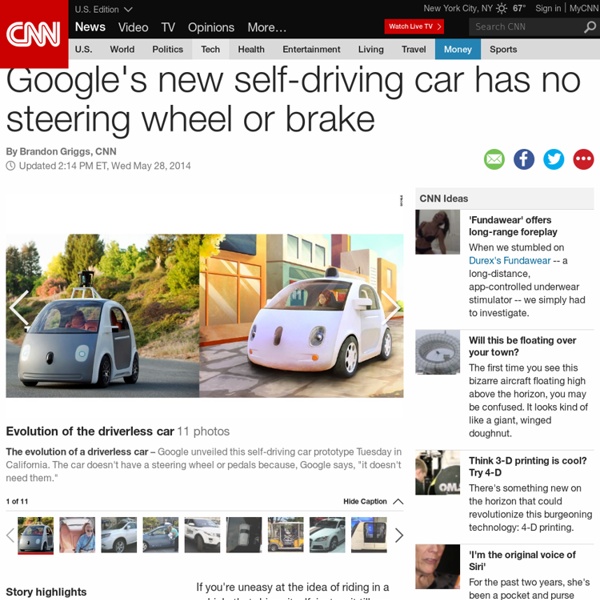Google self-driving car has no steering wheel or brake

The tech trends that will change the world
That said, there are a few undeniable trends. Making sense of the numbers Shelly Palmer. According to every credible source we can find, there are almost 3 billion people connected to the public internet right now; by 2020 the number will approach 4 billion. So how do you sort it out? I use three laws to help me understand the rate of change: Moore's Law, the Law of Accelerating Returns, and Metcalfe's Law. This was true for a while, but now, because of the Law of Accelerating Returns (which states that the rate of technological change is accelerating exponentially) we know that this doubling of computing power happens much faster than that. 1) Technology is changing at a faster and faster pace. 2) The more people are connected, the more powerful the network becomes. Connectivity: everything that can be connected, will be connected Information overload: data is more powerful in the presence of other data Security and privacy: everything that can be hacked, will be hacked What's next? Read
AR week 3
Related:
Related:



